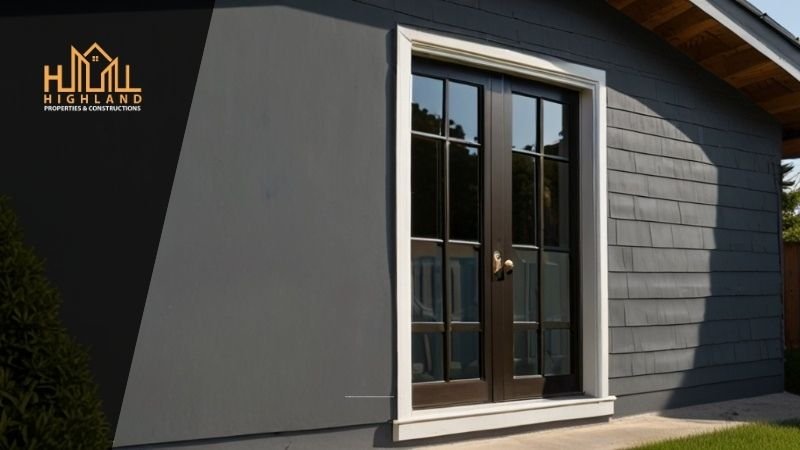7 Essential Exterior Paint Work Tips
A splash of color rejuvenates the entire façade of your house. Besides breathing new life into a dull and ordinary look, it shields the outer structure of your house from weather disruptions and makes it energy efficient owing to its insulating aspects. Paint’s protection against all the deteriorating elements increases the longevity and durability of your property. However, to attain the complete package, the right choice of paint and its application technique must be adhered to.
Therefore, here are some essential tips for exterior paintwork to secure the best results. Let’s jump into the project.
Selection of Paint Type and Color:
1- Exterior Masonry Paint:
These paints come with water-resistant properties and go well with the exterior paintwork. You can choose from Acrylic or silicon resin: Both are unsusceptible to water and offer water resistance attributes. However, Silicon resin paints are comparatively better as they stand the test of time and water. Depending on the type of masonry paints, some offer sleek and lustrous finishes, while others are grainy and rugged. In respect of cost, both of these are expensive.
2- Paint Color:
The right choice of paint color, especially for the exterior of your house, is essential for its ambiance and feel and also for its durability. For example, white color tends to absorb dirt and rainwater stains, making it look dull in no time. On the other hand, beige and brownish color schemes for exterior paintwork will work well in terms of maintenance and endurance in the long term.
Tips for Exterior Paint Work: Step-by-Step Painting Techniques
Also Read: Best Paint for House Exteriors in 2024
1- Wait for the Right Weather Conditions:
Wait until the weather conditions are compatible with this task to ensure your paint’s sustainability and expected performance. Some paints can resist dampness or rain, but others may lose their viscosity in rain. Therefore, wait for favorable weather conditions for exterior wall work to avoid such circumstances.
2- Clean the Surface:

Cleaning the surface of your wall is crucial for better paintwork results. If you paint on an unclean surface, your paint will absorb it. This will not only affect the tone of your paint but also leave the surface rough and bumpy. Therefore, to achieve a sleek and shiny finish, clean and prepare the walls beforehand.
3- Filling or Repairing Cracks:
Have a look to catch any uneven, cracked, and damaged surfaces before starting the main task. Fill the cracks with the filler and leave them for some time to get dried. If any crack or hole is more profound than 2cm, avoid filling the whole at once. Instead, make it in various layers and leave every layer for the right time to get dried completely. Devise the right strategy and tools for filling and repairing the cracks according to the stiffness of the surface.
4- Wrap up Non-paintable Surfaces:
To avoid paint stains, cover all the self-finished surfaces that do not require painting before starting your paintwork. Different materials of protecting sheets are used according to the type of surface, such as polythene sheets to cover pipes, newspapers for windows, masking sheets for plants, and tapes for switchboards.
5- Use of Primer:

Use the right amount of paint primer before the application of paint. However, only use the primer for the first-time paintwork; you may skip this part if you repaint the already-treated walls.
6- Ensure the Intactness of your Paint Color and Form:
Once you have prepared your wall for painting, ensure that your paint’s color and Form are in the proper condition. One may face discoloration or cracked and separated liquid in the paint cans. To avoid such a situation, open the cans right before painting. Don’t leave the remaining paint uncovered if you need to leave some product behind for any other time.
7- Start from the Edges of the Wall:
Start the paintwork from the edges to avoid rough patches on the surface and achieve integrated and harmonious finishes. After completing all the trims, corners, edges, and boundaries of a surface, you may move toward the other parts of the surface.
8- Remove the Protective Tapes at Right Time:
Avoid pulling off the protective tapes before removing the paint’s moisture completely. Following this step may prevent unwanted stains on the edges and ensure a clean removal.
9- Use Clean Tools:
Use clean tools to finish your exterior paintwork smoothly and cleanly. Avoid using one paintbrush for different colors of paint, as mixing colors can change the original tone and result in multiple shades or patches on the surface.
10- Ensure Completion:
Leave the paint to rest for approximately an hour or according to the prescribed time so it can dry before the second coat. Multiple coats of paint ensure full coverage and durability of your exterior.
Exterior Paint Work Tips – FAQs
Q1. How can the risk of bumpy surfaces be minimized?
Ans: Cleaning the surface thoroughly and filling up the cracks and holes with fillers can avoid rough and bumpy surfaces and achieve smooth and sleek finishes.
Q2. Is primer compulsory to use before paint?
Ans: Yes, it is in case of first-time paint on the bare walls. Primer is not used in painting already treated walls.





Leave a Reply